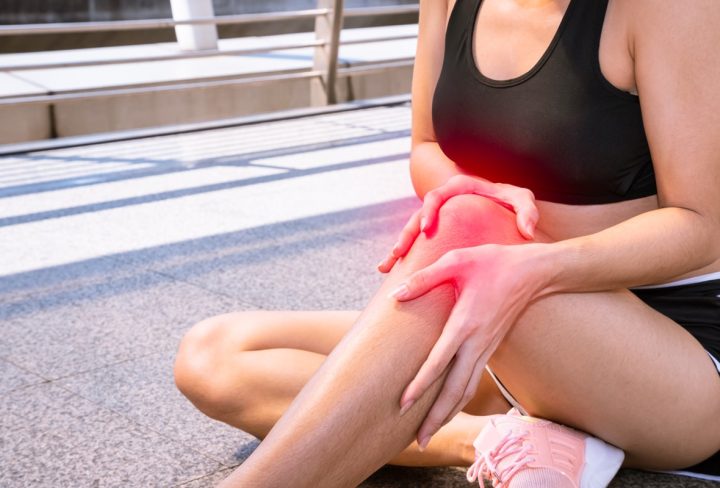It occurs when the ligaments in the knee are stretched, torn, or damaged.
The knee has four main ligaments:
- Anterior cruciate ligament (ACL)
- Posterior cruciate ligament (PCL)
- Medial collateral ligament (MCL)
- Lateral collateral ligament (LCL)
Ligament injuries can range from mild strains to complete tears and can occur as a result of sports injuries, falls, or other trauma.
Symptoms of Knee Ligament Injuries
- Pain and tenderness in the knee
- Swelling and bruising around the knee joint
- Limited range of motion or difficulty moving the knee
- Instability or feeling like the knee is giving way
- Popping or snapping sensation at the time of injury
Grade-Specific Treatment Strategies for Knee Ligament Injuries
Grade 1 Ligament Sprains: These are mild injuries characterized by slight stretching or microscopic tearing of the ligament fibers.
Treatment often includes:
- Rest to allow healing.
- Ice and compression for pain and swelling.
- Gentle rehabilitation exercises to regain strength and stability.
Grade 2 Ligament Injuries: These involve partial tearing of the ligament and may require more intensive care.
- Immobilization with a brace to prevent further damage.
- Supervised physical therapy for strengthening and restoring range of motion.
- Potential use of crutches to avoid weight-bearing on the injured knee.
Grade 3 Ligament Tears: The most severe type, with a complete rupture of the ligament. Treatment options are more extensive.
- Surgical intervention, such as ligament reconstruction.
- Post-surgery physical therapy to regain strength, stability, and function.
- Prolonged recovery and rehabilitation period.
Prevention of Knee Ligament Injuries
- Maintain good physical fitness and strength
- Use appropriate protective gear
- Warm up and cool down properly
- Gradually increase the intensity and duration of exercise
- Avoid high-impact activities or reduce their frequency
- Maintain a healthy body weight
- Maintain good posture and alignment
- Address any underlying muscle imbalances or weaknesses through targeted exercise or physical therapy
Physical therapy for Knee Ligament Injuries
- Help to reduce pain and swelling
- Improve the range of motion and flexibility
- Increase strength and stability
Quadriceps Sets for Knee Ligament Injuries
- Sit on a chair with your back straight and your feet flat on the floor.
- Tighten your thigh muscles and press the back of your knee down into the chair.
- Hold for 5-10 seconds, then release and rest for a few seconds.
- Repeat for several sets of 10-15 repetitions.
Straight Leg Raises for Knee Ligament Injuries
- Lie on your back with one leg straight and the other bent.
- Tighten your thigh muscles and lift your straight leg off the ground.
- Hold for a few seconds, then lower your leg back down.
- Repeat for several sets of 10-15 repetitions, then switch legs and repeat.
Hamstring Curls for Knee Ligament Injuries
- Stand behind a chair and hold onto the back for support.
- Bend one leg back, bringing your heel up towards your buttocks.
- Hold for a few seconds, then lower your leg back down.
- Repeat for several sets of 10-15 repetitions, then switch legs and repeat.
Wall Slides for Knee Ligament Injuries
- Stand with your back against a wall and your feet about shoulder-width apart.
- Slowly slide down the wall, bending your knees and keeping your back straight.
- Hold for a few seconds, then slowly slide back up to a standing position.
- Repeat for several sets of 10-15 repetitions.
Step-ups for Knee Ligament Injuries
- Stand in front of a step or platform.
- Step up onto the platform with one foot, then bring your other foot up to meet it.
- Step back down with one foot, then the other.
- Repeat for several sets of 10-15 repetitions, then switch legs and repeat.


